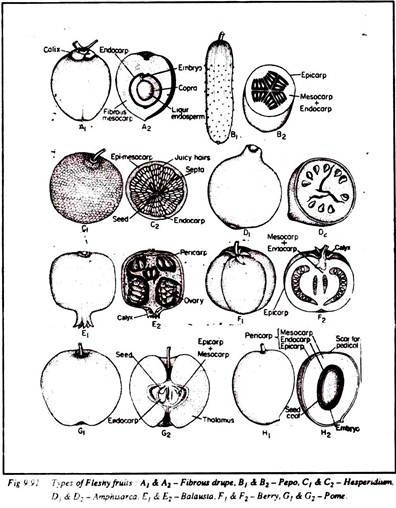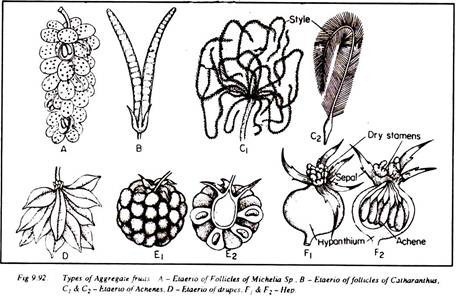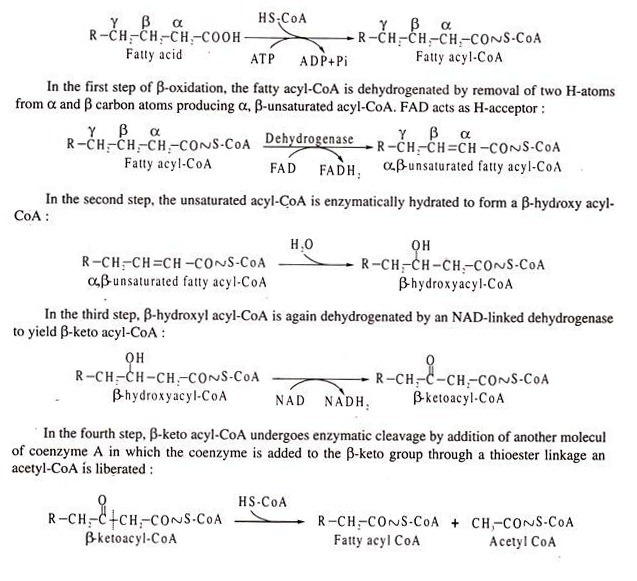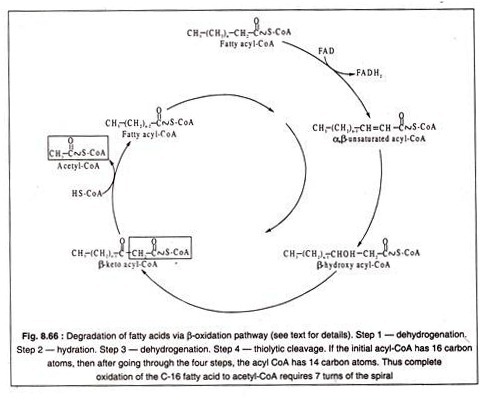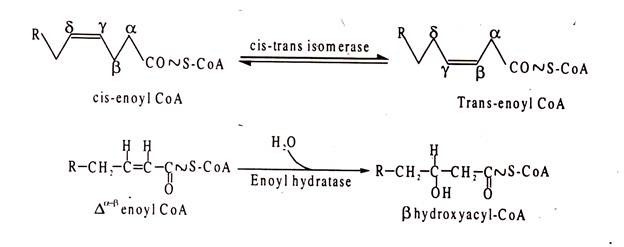ADVERTISEMENTS:
In this article we will discuss about metabolism of fatty acids.
Most of the naturally occurring neutral fats and oils are esters of glycerol and long-chain fatty acids, the most common among them being palmitic acid (C16-saturated fatty acid) and stearic acid (Cig-saturated fatty acid). The degradation of fats begin with hydrolytic cleavage of fatty acids by the enzymes, lipases. The products are glycerol and free fatty acids. Glycerol can be metabolized via EMP.
In this section only oxidation of fatty acids is being considered. The major pathway by which free fatty acids are catabolized is the β-oxidation spiral, so called because the P-carbon of the fatty acid is oxidized to a keto-group before the molecule is cleaved into a two carbon unit and a longer chain shorter by two carbon atoms.
ADVERTISEMENTS:
β-oxidation pathway is not cyclic rather it is spiral, because one cycle of steps leaves the fatty- acid chain shorter by a two-carbon unit. The cycle of steps is repeated until the entire carbon chain is broken down to two-carbon units. These two-carbon units are acetyl-CoA which is further metabolized via TCA-cycle to yield CO2, H2O and ATP.
A free fatty acid molecule has to be activated to a higher energy level before its carboxyl group can form an ester with coenzyme A.
In the first step of –oxidation, the fatty acyI-CoA is dehydrogenated by removal of two H-atoms from α and β carbon atoms producing α, β unsaturated acyI-CoA. FAD acts as H-acceptor.
In the second step, the unsaturated acyI-coA is enzymatically hydrated to form a β–hydroxy acyI CoA.
In the third step, β-hydroxyI acyI-CoA is again dehydrogenated by an NAD-linked dehydrogenase to yield β-keto acyI-CoA.
In the fourth step, β-keto acyI-CoA undergoes enzymatic cleavage by addition of another molecule of coenzyme A in which the coenzyme is added to the β-keto group through a thioster linkage an acetyI-CoA is liberated.
This completes one turn of reactions which produces a fatty acid (as CoA ester) having two C-atoms less than the original fatty acid and an acetyl-CoA. If the original fatty acid is stearic acid, then, after one cycle of reactions, palmityl-CoA and acetyl-CoA are the products. The cycle is repeated until the fatty acid is entirely broken down to acetyl-CoA.
The β-oxidation spiral is shown in Fig. 8.66:
Unsaturated fatty acids, like oleic acid — a C-18 fatty acid with one double bond between C9 and C10 (∆9, 10) — are also degraded by the β-oxidation pathway. An extra enzyme, a cis-trans isomerase, is required for unsaturated fatty acids. β-oxidation continues until the double bond is reached.
Through the action of an enoyl hydratase, β-hydroxyacyl CoA is produced which is then degraded by the usual steps of dehydrogenation and thiolytic cleavage (Steps 3 and 4 of Fig. 8.66):

